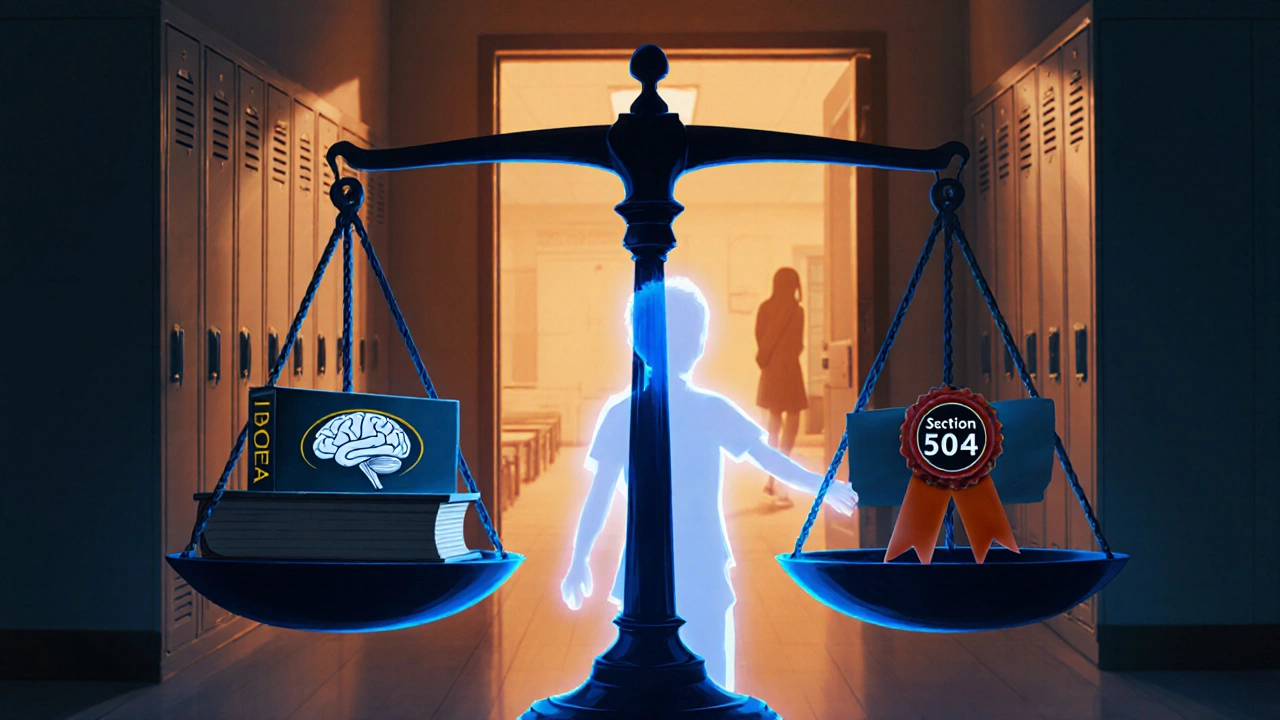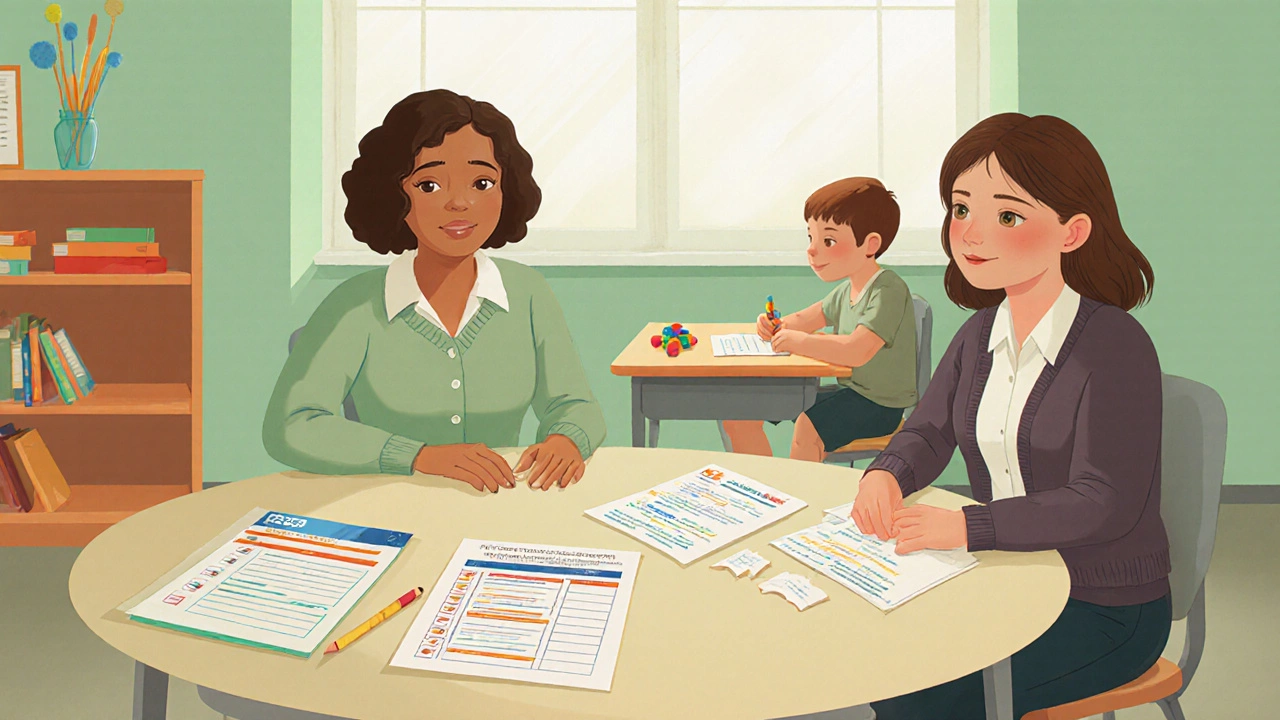When you hear the term ADHD, you probably picture a restless child or an adult struggling to focus. The next question that pops up for many families and teachers is: does ADHD count as a learning disability? The answer isn’t a simple yes or no - it depends on how the condition shows up in the classroom, what the law says, and how schools decide to support the student.
What Exactly Is ADHD?
ADHD is a neurodevelopmental disorder characterized by persistent patterns of inattention, hyperactivity, and impulsivity that interfere with daily functioning. According to the DSM-5, symptoms must appear before age 12 and be present in two or more settings, such as home and school.
ADHD isn’t a single, uniform condition. It’s broken into three presentations: predominantly inattentive, predominantly hyperactive‑impulsive, and combined. Each presentation can affect learning in different ways, from difficulty following instructions to trouble staying seated during a lesson.
Defining Learning Disabilities
Learning disability is a term used in education law to describe a disorder that specifically hampers the acquisition of academic skills, despite average or above‑average intelligence. The most common examples are dyslexia (reading), dyscalculia (math), and dysgraphia (writing). The definition is anchored in the Individuals with Disabilities Education Act (IDEA) and the Section 504 of the Rehabilitation Act.
Key traits of a learning disability include a significant gap between expected and actual achievement, and the need for specialized instruction or accommodations.
Legal Landscape: Does the Law Group ADHD with Learning Disabilities?
Under IDEA, ADHD can be considered a “Other Health Impaired” (OHI) condition. While OHI is a separate eligibility category from “Specific Learning Disability” (SLD), both grant the student access to an Individualized Education Program (IEP) if the disability adversely affects educational performance.
For students who don’t qualify for an IEP, Section 504 can still provide accommodations because ADHD is recognized as a disability that limits a major life activity-namely, learning.
In practice, the distinction matters because the documentation required and the range of services differ between IDEA‑eligible categories and 504 plans.

How ADHD Can Manifest as a Learning Disability
Even though ADHD isn’t classified as a learning disability per se, its symptoms often mimic or exacerbate actual learning disorders:
- Inattention can cause missed instructions, leading to poor reading comprehension-a hallmark of dyslexia.
- Impulsivity may result in careless math errors, resembling dyscalculia.
- Executive‑function deficits, such as poor organization and time management, affect note‑taking and test‑taking skills.
Because of these overlaps, many schools assess ADHD students for co‑occurring learning disabilities. The assessment process typically includes:
- Review of medical and educational history.
- Standardized academic testing.
- Behavioral rating scales completed by parents and teachers.
- Observation in the classroom.
If the testing reveals a specific academic weakness that isn’t fully explained by ADHD symptoms alone, the child may be diagnosed with both ADHD (OHI) and a learning disability (SLD).
Practical Differences: What Support Looks Like
Understanding whether a student’s challenges stem from ADHD, a learning disability, or both helps educators choose the right interventions. Below is a quick comparison:
| Aspect | ADHD (OHI) | Learning Disability (SLD) |
|---|---|---|
| Primary Impact | Attention regulation, impulse control | Specific academic skill acquisition |
| Legal Category | Other Health Impaired (IDEA) | Specific Learning Disability (IDEA) |
| Typical Accommodations | Extended time, preferential seating, behavior plan | Structured literacy instruction, math manipulatives, assistive tech |
| Assessment Tools | Conners, Vanderbilt, clinical interview | WIAT, WISC processing indices, curriculum‑based measures |
| Co‑occurrence Rate | 30‑50% also have an SLD | 40‑60% also have ADHD |
Notice how both categories often share accommodations like extended time. The nuance is in the instructional approach: a student with dyslexia gets explicit phonics instruction, while a student with ADHD may benefit more from chunked tasks and frequent movement breaks.
Steps Parents Can Take When Unsure
If you’re a parent wondering whether your child’s ADHD qualifies as a learning disability, follow this roadmap:
- Gather Documentation: Collect medical diagnoses, teacher reports, and any past test scores.
- Request an Evaluation: Contact your school’s special education coordinator and ask for a comprehensive assessment that looks at both ADHD symptoms and academic skills.
- Review the Results: Pay attention to whether the report cites a specific learning disability in addition to ADHD.
- Discuss Accommodations: Whether you get an IEP or a 504 plan, make sure it addresses both attention regulation and any identified academic gaps.
- Monitor Progress: Use progress monitoring tools (e.g., weekly reading logs, math fluency checks) to see if the interventions are working.
Remember, you have the right to appeal if you feel the school’s decision doesn’t reflect your child’s true needs.

Common Misconceptions to Debunk
- “ADHD isn’t a real disability.” - Legally, ADHD is recognized as a disability under both IDEA and 504. It can significantly impede learning without support.
- “If a child has ADHD, they can’t have dyslexia too.” - Co‑occurrence is common; each condition requires its own set of strategies.
- “A 504 plan is the same as an IEP.” - An IEP typically offers more intensive, specialized instruction, while a 504 plan provides accommodations within the general education setting.
- “Medication alone fixes academic problems.” - Medication can improve attention, but without targeted academic interventions, learning gaps often remain.
Key Takeaways for Schools
Educators need to treat ADHD and learning disabilities as overlapping but distinct categories. Here’s a quick cheat‑sheet for teachers:
- Screen for co‑occurring SLDs whenever a student is identified with ADHD.
- Use multi‑modal instruction: visual cues for attention, explicit skill teaching for academic deficits.
- Document behavior and academic data separately; this helps during eligibility meetings.
- Collaborate with families-parents often have the clearest picture of where the child struggles at home.
Frequently Asked Questions
Can a student be eligible for both an IEP and a 504 plan?
Yes. A student can have an IEP for a specific learning disability and also receive a 504 plan to address ADHD‑related attention needs. The two plans can coexist, each covering different aspects of support.
What’s the difference between a 504 plan and an IEP for ADHD?
A 504 plan provides accommodations (e.g., extra time, seat selection) without altering curriculum. An IEP offers specialized instruction, modifications to curriculum, and related services, and is required when the ADHD (or co‑occurring condition) substantially limits learning.
How often should the IEP be reviewed for a student with ADHD?
IEPs are reviewed at least annually, but many schools schedule a mid‑year review for students with ADHD to adjust accommodations as needed.
Do all students with ADHD automatically get extra time on tests?
Not automatically. Extra time must be documented in an IEP or 504 plan based on the student’s demonstrated need.
Can medication affect eligibility for special education services?
Medication can improve symptoms, which may reduce the severity of functional impact. However, eligibility is based on current performance, not on whether medication is used.
Bottom line: ADHD itself isn’t labeled a learning disability, but its impact on academic performance can be just as profound. By recognizing the overlap, families and schools can secure the right mix of accommodations, instruction, and support to help every learner thrive.






